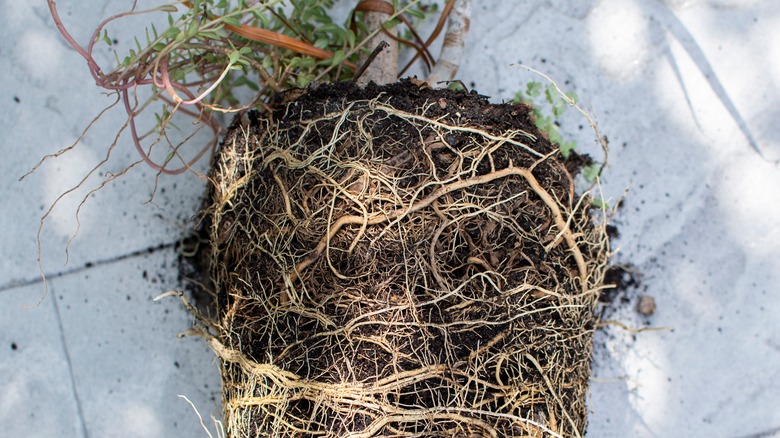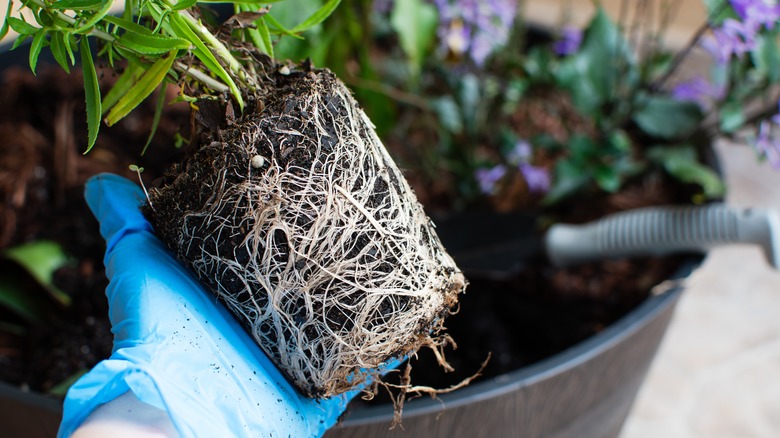Why A Root-Bound Plant Can Sometimes Be Positive (& Signs It Is Time To Repot)
Repotting is one of the most fun parts of houseplant ownership — you get to pick a cool new pot and get your hands in the soil. One of the things that gets us repotting is when our plants become root-bound. While there are risks to being root-bound, there can also be some positive aspects: it reduces the likelihood of root rot in plants that are vulnerable to overwatering, and it encourages flower blossoms and pup growth in some plants.
Being root-bound means that the roots have run out of space to grow and start to overlap each other instead. You may see the plant's roots sticking out above the soil or through the drainage holes. In extreme cases, the roots become a tightly tangled mass. All houseplants are vulnerable to becoming root-bound, especially if they've been in the same pot for years.
The typical recommendation is to repot root-bound plants. With all those roots in such a small space, there's less room for soil, and that can be hard on the plant — it may be unable to get enough water and experience stress and stunted growth. The drainage holes can also get so clogged with roots that they rot.
But some people claim that plants don't suffer that much from being root-bound. There's truth in that statement too: getting a bit root-bound is fine for some plants, and repotting too often or over-potting comes with its own risks. Your choice depends on the plant as well as your goals as a plant owner.
Pros of being root-bound and plants that tolerate it
Having less room for soil in the pot isn't always a terrible thing. It means that the roots are less likely to sit in water for a long time as the soil dries out, which means the roots get more oxygen and there's a lower risk of root rot or overwatering, according to Tanner the Planter on TikTok. This is helpful for plants like cacti and succulents. Snake plants and aloe vera can also thrive while root-bound. Also, some people prefer to keep their snake plants and aloe veras root-bound because it prompts them to produce flowers or pups (baby plants). Other plants that grow well while root-bound include spider plants, African violets, peace lilies, and fig trees.
Repotting too soon can also be stressful for the plant. Plants may experience transplant shock when repotting, so it's best to wait a bit before repotting new plants from the nursery and avoid repotting your plants more than every one to two years. Jumping to too big of a pot also increases the chance of root rot.
So when is it time to revive a root-bound houseplant by repotting? If the plant is suffering from lack of water or you need to water it more frequently than you used to, that's a sign that the roots are too crowded and there's not enough soil. The soil may also feel compact and dense to the touch, and the plant may stop producing new growth, or the growth might be small and stunted. If you notice signs of stress like that and can see that the plant is root-bound, it's time to repot.

